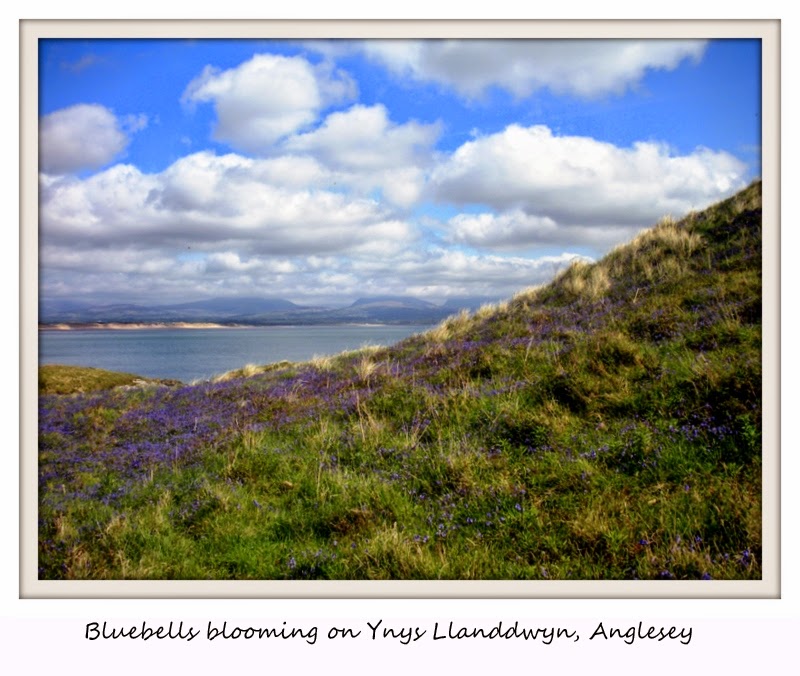Today is one of those days where my motivation to work is nonexistent. I've answered a few emails, straightened up my desk, tested all my pens to see if they're still in working order, mulled over a some themes for future blog posts . . . and here it is, lunchtime. Half the day gone and I've still not set my mind to the one big task I have to do today. It's a job that usually seems more like play than work to me, yet for some reason today it feels onerous, ponderous, heavy.
And speaking of work versus play, in my effort to procrastinate even further I decided to look up the definition of work and found the synonyms listed quite revealing: drudgery, labor, toil, enterprise, project, job, responsibility, industry, occupation, business, job, trade, calling, vocation, profession, product, achievement, feat.
Not too many happy, energizing words in that list. No wonder I'm not eager to get to my work.
Which brings me to today's postcards, from Lynn Cerrig Bach, a little lake on Anglesey Island in sight of the RAF base where Prince William was recently stationed.
 |
| Lynn Cerrig Bach, Anglesey Island |
During World War II when the area around the lake was being dug up to make runways for the base, a horde of iron age Celtic artifacts was discovered-- shields and swords, chains and chariot wheels, horse gear and household implements. The treasures, which seemed to have been broken deliberately before being tossed into the lake by the druids (priests of the pre-Christian Celtic religion), were likely votive offerings, symbols of work offered to the deities in exchange for blessing and good fortune.
 |
Pilgrims preparing to make
their own votive offerings |
More evidence of this Celtic idea of seeking blessings for one's work is evident in the many task-related blessings in
The Carmina Gadelica, a source book for Celtic prayers collected by Alexander Carmichael in the late 19th century. Carmichael dedicates a whole section to prayers for "Labour" including invocations for herding, weaving, milking, fishing and assorted other tasks on the to do list of a Scottish crofter.
What does all this have to do with my inability to get to work today? Last month I led a retreat for a group of thirty women and during our weekend together we talked about ways to weave the strands of Celtic spirituality into our daily lives. One of these ways was writing blessings for a specific aspect of our work or daily routine. A few weeks later while having lunch with one of the women, she mentioned how a few days before she'd been having a hard time facing a looming task on her to do list when she remembered my suggestion to write a blessing for it. So she sat down and did just that. That act of putting pen to paper and recalling the big picture reasons for why she needed to do what had to be done and inviting the Holy into the process transformed what had been mundane into an opportunity for mindfulness.
So in a moment I'll post this to the blog and move onto the big task for today. But not before taking a moment to light a candle and invite the Holy One to bless the work I have to do. Work that isn't labor, toil, drudgery or effort. Work that is creation, nourishment, discovery, offering.
If you don't feel like writing a specific blessing for your own particular work, here's one by John O'Donohue for work in general.
For Work from To Bless the Space Between Us (Doubleday)
May the light of your soul bless your work
with love and warmth of heart.
May you see in what you do the beauty of your soul.
May the sacredness of your work bring light and renewal
to those who work with you
and to those who see and receive your work.
May your work never exhaust you.
May it release wellsprings of refreshment,
inspiration, and excitement.
May you never become lost in bland absences.
May the day never burden.
May dawn find hope in your heart,
approaching your new day with dreams,
possibilities, and promises.
May evening find you gracious and fulfilled.
May you go into the night blessed,
sheltered, and protected.
May your soul calm, console, and renew you.























